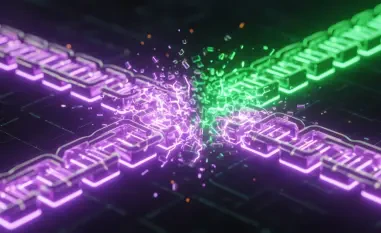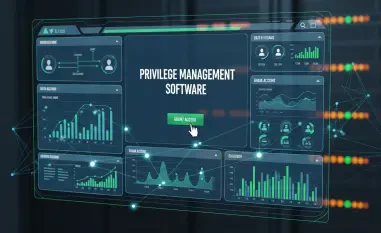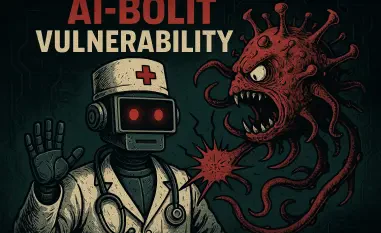In the digital age, cybersecurity threats are surging, increasingly affecting everyday life and making headlines worldwide. Hackers steal, corrupt, or hold valuable data hostage; yet, many organizations still rely on outdated defense strategies and tools to protect their networks, data, and systems. The new frontier of cybersecurity demands modern defenses to counter modern threats effectively. To stay ahead in the dynamic cybersecurity landscape, organizations must overhaul their traditional approaches and adopt proactive measures against sophisticated cybercriminals.
Modern Cybersecurity Challenges
Today’s cyber threats are more sophisticated and varied than ever before. One of the most prominent and devastating is ransomware, which has evolved from simple file encryption to multifaceted attacks. Contemporary ransomware schemes not only encrypt a victim’s files but also involve the exfiltration of sensitive data. Attackers leverage the threat of publicly releasing this data to increase their ransom demands, thus coercing targets into paying higher amounts. Carefully selecting their targets to ensure maximum payout, these cybercriminals are causing significant financial and operational disruptions for victimized organizations.
Cloud attacks also present a significant challenge as companies migrate more of their operations to cloud environments. Unfortunately, common misconfigurations such as unsecured storage buckets and inadequate Identity and Access Management (IAM) policies expose critical data to cyber threats. Attackers capitalize on these weaknesses to extract valuable information, including usernames, passwords, and API keys. By exploiting these vulnerabilities, cybercriminals can infiltrate deeper into corporate networks, potentially gaining access to vital systems and information, which can be catastrophic for businesses relying heavily on cloud platforms.
Compromised vendors, also known as supply chain attacks, further complicate the cybersecurity landscape. Organizations increasingly depend on third-party vendors and software providers, making their digital ecosystems more interconnected and consequently more vulnerable. An attack on a single vendor can have devastating ripple effects across multiple organizations, expanding the attack surface significantly. The infamous SolarWinds breach serves as a prime example of how a single vendor’s compromise can lead to widespread infiltration across various government and corporate systems. This incident highlighted the urgent need for robust vendor management and security practices to mitigate the risks of supply chain attacks.
The rise of AI-powered threats adds another layer of complexity to cybersecurity challenges. Cyber adversaries use artificial intelligence to analyze system vulnerabilities and automate sophisticated attacks. For instance, AI-enhanced spear phishing campaigns use personalized data mined from social media to craft highly targeted and convincing email attacks. Machine learning algorithms further assist attackers in identifying unknown vulnerabilities within networks and applications, making it harder for traditional defense mechanisms to keep pace. Thus, the use of AI by cybercriminals significantly escalates the sophistication and efficacy of their threats.
Modern Defense Strategies
To counter these advanced threats, organizations need to shift from reactive to proactive defense strategies, focusing on protecting access, detecting threats, and responding swiftly. Protecting access through a Zero Trust architecture is fundamental. The Zero Trust model operates under the principle of “never trust, always verify,” emphasizing meticulous control over access to applications, data, and network segments. This strategy ensures that every access request is validated through strong signals such as Multi-Factor Authentication (MFA) and continuous assessment of user and device integrity. By implementing Zero Trust principles, organizations can minimize opportunities for attackers to move laterally within their networks, effectively locking down privileges and reducing potential attack vectors.
Detecting threats involves deploying advanced analytics powered by AI and machine learning to analyze vast amounts of activity data. These technologies help establish baselines of normal activities, making it easier to identify anomalies indicative of potential breaches. User Behavior Analytics (UBA) plays a critical role in flagging abnormal user actions that might signal a compromised account. Similarly, Network Traffic Analysis (NTA) monitors communication patterns within the network, identifying suspicious activities that could indicate an ongoing attack. Cloud-centric monitoring also plays a significant role, continuously evaluating infrastructure configurations, permissions, and workload activities to spot and address risks promptly.
Swift response capabilities are crucial in mitigating the impacts of cyberattacks. Security Orchestration, Automation, and Response (SOAR) platforms are essential tools that offer standardized incident response playbooks for common threat scenarios. These platforms automate routine responses, such as isolating compromised endpoints, thereby reducing the manual burden on security teams and enabling them to focus on more strategic tasks. By leveraging SOAR technologies, organizations can significantly improve their response times and reduce the extent of damage caused by cyber incidents, maintaining a stronger security posture.
Additional Considerations
While advanced technologies form the foundation of effective cybersecurity, human factors and organizational preparedness are equally important. Security awareness training is a critical component of a comprehensive defense strategy. By educating employees on how to identify and respond to cybersecurity threats, particularly phishing attacks, organizations can significantly reduce their exposure to these common attack vectors. Regular training sessions arm employees with the knowledge and skills to recognize suspicious emails, links, and other potential threats, making them less likely to fall victim to cyber scams.
Incident response planning is another vital aspect of organizational cybersecurity. Developing and maintaining detailed response plans that outline specific actions and roles during a cyber crisis ensures swift and coordinated responses. Predefined protocols help manage and mitigate damage, enabling organizations to act efficiently rather than scrambling to react in real-time. Comprehensive incident response plans should include steps for containment, eradication, and recovery, providing structured guidance for minimizing the impact of cybersecurity incidents and facilitating the restoration of normal operations.
Transforming Cybersecurity
The journey towards robust cybersecurity is an ongoing process that requires continuous transformation and adaptation. Prioritizing progress over perfection is a pragmatic approach that encourages organizations to close critical capability gaps incrementally. For instance, implementing Zero Trust models within existing infrastructure can yield immediate benefits in limiting internal threat propagation, even as broader modernization efforts continue. By focusing on achievable improvements, organizations can steadily enhance their security posture and address emerging threats more effectively.
Involving stakeholders beyond the IT department is essential for fostering a culture of security awareness across the entire organization. Cybersecurity is not just an IT concern; it is an organizational issue that requires engagement from cross-functional teams. Promoting a culture of security involves regular communication, training, and collaboration among all departments to ensure that everyone understands their role in maintaining a secure environment. By embedding cybersecurity practices into the organizational culture, businesses can create a united front against cyber threats, enhancing their overall resilience.
Leveraging AI and automation further bolsters cybersecurity efforts by reducing the human workload and improving response times. AI-driven security solutions and SOAR platforms provide consistent 24/7 monitoring, rapidly identifying legitimate threats and streamlining investigations and responses. These technologies offer a significant edge in defending against advanced cyber adversaries by enhancing threat detection capabilities and automating routine tasks. As a result, security teams can focus on more strategic activities, such as threat hunting and incident analysis, leading to a more robust and effective cybersecurity strategy.
Future-Proofing Against Cyber Threats
In today’s digital era, cybersecurity threats are rapidly increasing, heavily impacting everyday life and frequently hitting the headlines worldwide. Cybercriminals have become adept at stealing, corrupting, or holding valuable data hostage. Despite this rising danger, many organizations still rely on outdated defense strategies and tools to protect their networks, data, and systems. The modern landscape of cybersecurity demands updated and innovative defenses to counter these 21st-century threats effectively. To remain secure in this ever-evolving environment, organizations must critically reevaluate their traditional defense methods. They need to adopt more proactive and advanced security measures to outpace and counteract sophisticated cybercriminal activities. This includes investing in new technologies, continuous monitoring, and updating security protocols, as well as training employees to recognize and prevent potential threats. In essence, staying ahead in the cybersecurity game requires a dynamic approach and commitment to evolving with the threats posed by an increasingly digital world.













